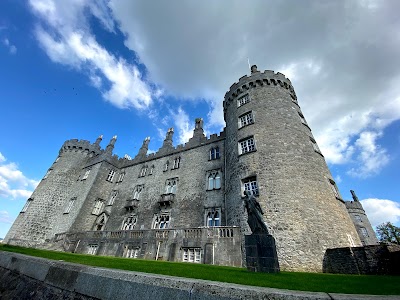Carlow Cathedral (Ard-Eaglais Cheatharlach)
Overview
The Cathedral of the Assumption of Blessed Virgin Mary in Carlow, affectionately known as Carlow Cathedral, is a stunning architectural gem that captures the rich history and beauty of Carlow, Ireland. Nestled in the heart of the town, this magnificent structure is a must-visit for anyone seeking to explore the cultural heritage of the area.
The story of Carlow Cathedral dates back to the early 19th century when the burgeoning Catholic community required a larger place of worship. Spearheaded by the passionate parish priest, Father James Taylor, the initiative to construct a grand cathedral galvanized the entire community into action. His dedication set the stage for a remarkable journey of faith and craftsmanship.
Construction began in 1828, with the design entrusted to the esteemed architect Thomas Cobden. Cobden masterfully blended Gothic Revival and Neoclassical styles, creating a unique architectural expression that was characteristic of the era. This striking combination gives Carlow Cathedral its distinctive and captivating appearance, making it a landmark in its own right.
Among the cathedral's most notable features is its impressive bell tower. This towering structure not only enhances the skyline but also serves as a beloved landmark for the town. The bell tower showcases exquisite craftsmanship, adorned with intricate stone carvings and elegant lines. Originally housing just one bell, it has since welcomed additional bells, which resonate harmoniously during services, filling the air with their melodic chimes.
Step inside, and you'll find an equally breathtaking interior. The cathedral boasts high vaulted ceilings and grand columns that create an atmosphere of reverence and awe. Lining the walls, stained glass windows cast colorful light, depicting scenes from the life of the Blessed Virgin Mary and other religious figures. These windows not only add artistic beauty but also tell a spiritual narrative that enhances the worship experience.
At the heart of the interior lies the altar, crafted from fine materials, standing as a central focal point. Behind it, an impressive organ rises, complete with elaborately designed pipes. This magnificent instrument has been a source of angelic music, enriching Mass services and various ceremonies held within the cathedral throughout the years.
An interesting aspect of the cathedral's construction is the use of local materials. Builders sourced Carlow blue limestone from nearby quarries, known for its durability and pleasing color. This choice not only supported the local economy but also ensured that the cathedral would remain a sturdy and enduring structure for generations to come.
After years of dedicated labor, Carlow Cathedral was completed and opened for worship in 1833. It quickly became a central part of the community, hosting countless baptisms, weddings, and funerals. Through the years, the cathedral has witnessed the ebb and flow of time, standing as a timeless sanctuary of faith for the people of Carlow.
Carlow Cathedral has undergone various renovations and restorations to preserve its grandeur, with each phase carefully maintaining the original design while incorporating modern amenities for the comfort of visitors and parishioners alike. These efforts reflect a deep commitment to preserving this monumental edifice for future generations.
Beyond its religious significance, Carlow Cathedral symbolizes the strength and unity of the Carlow community. The collaborative efforts in its construction and ongoing care demonstrate a profound sense of pride and reverence for this historic landmark.
In conclusion, Carlow Cathedral is not merely a building; it is a powerful symbol of faith, community, and historical heritage. From its inception in the 19th century to its present-day standing, the cathedral continues to inspire awe and devotion among all who visit and worship within its hallowed walls.









